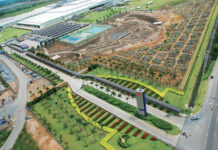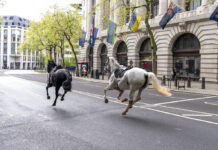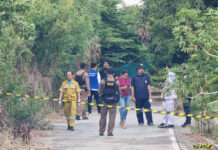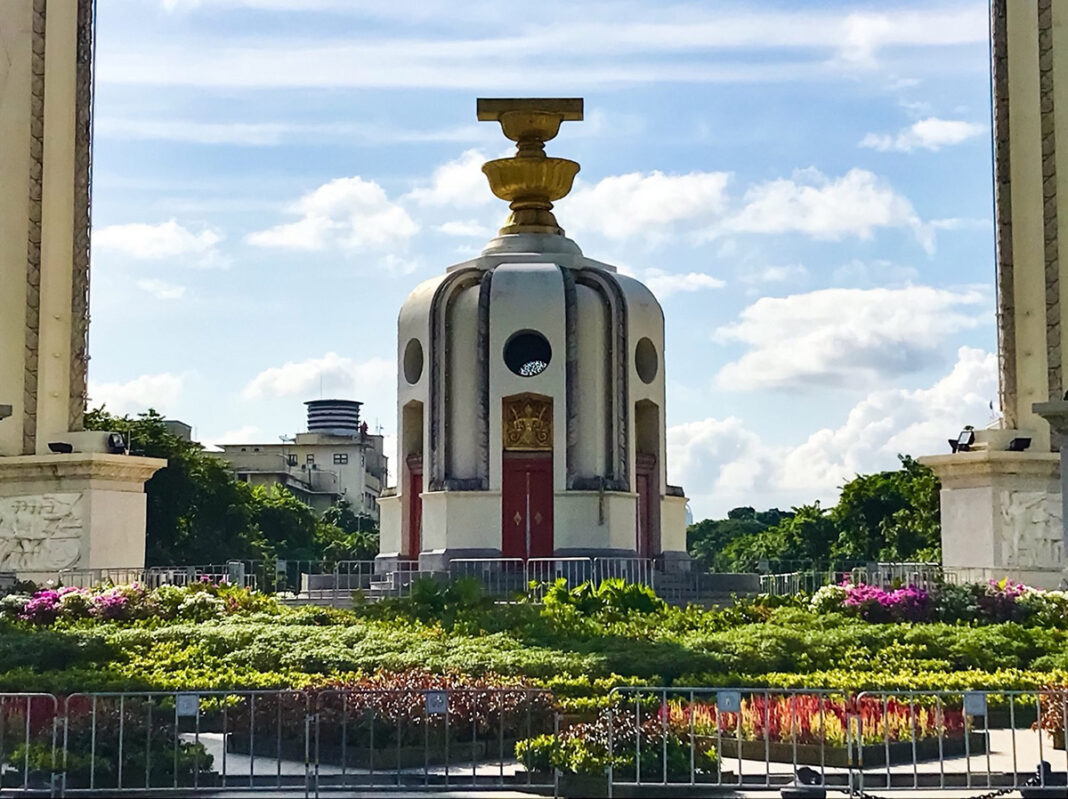Top: Plants and barricades bar access to the Democracy Monument in a photo taken Wednesday in Bangkok.
A beacon of Thailand’s democratic flowering has taken on new symbolic meaning in the fifth year of military rule.
When the occasion that brought democracy to Thailand passes all but forgotten Sunday, the Democracy Monument will be physically unreachable. Soaring above a busy traffic circle, its location has been covered with potted plants that make it clear visitors – especially demonstrators – are unwelcome.
It’s something that has happened over several months, beginning around the time fresh protests broke out against ongoing military rule.
Nareerat Roikaew, a local district official, said City Hall placed the fences and plants “to prevent protesters from entering” the site for political gatherings. She did not know when the barricades and plants – which include small palms, ficus and bougainvillea – would be removed.
Three days before the 86th anniversary of the June 24, 1932, revolt which ended absolute monarchy, junta spokesman Winthai Suvaree said Thursday he was unaware of the new landscaping. Asked when it would be cleared, he also could not say.
“I don’t know. I really don’t know,” Col. Winthai said.
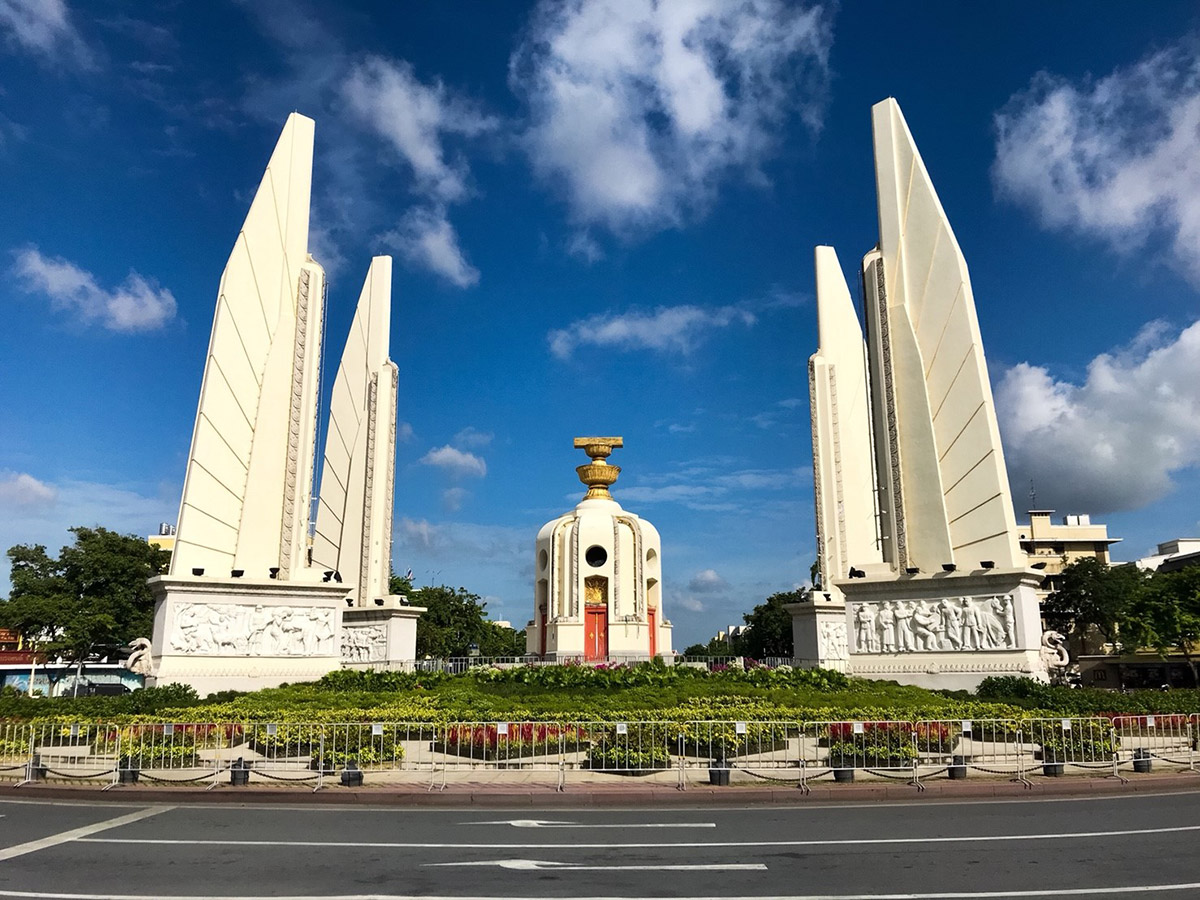
Read: No More Annual ‘Plaque Ceremony’ for 1932 Revolt
Pro-democracy activists said the move not only prevents them from using a site which has factored into the downfall of previous authoritarian regimes, but constitutes an attempt to suppress its importance.
“They’re trying to alter its meaning,” said Somyot Prueksakasemsuk, the leader of a group that usually led annual commemorations of the 1932 revolution.
Recently freed after serving a seven-year sentence for lese majeste and defamation, Somyot said the site was built to mark the revolt that introduced parliamentary democracy. Over time, it became a symbol of the country’s democratic struggles since hundreds of thousands gathered around it in 1973 to oust dictator Field Marshal Thanom Kittikachorn.
Commissioned in 1939 and placed at the heart of Ratchadamnoen Avenue, the symbol of Thailand’s modern era has been compared to the significance of the Arc de Triomphe along Paris.
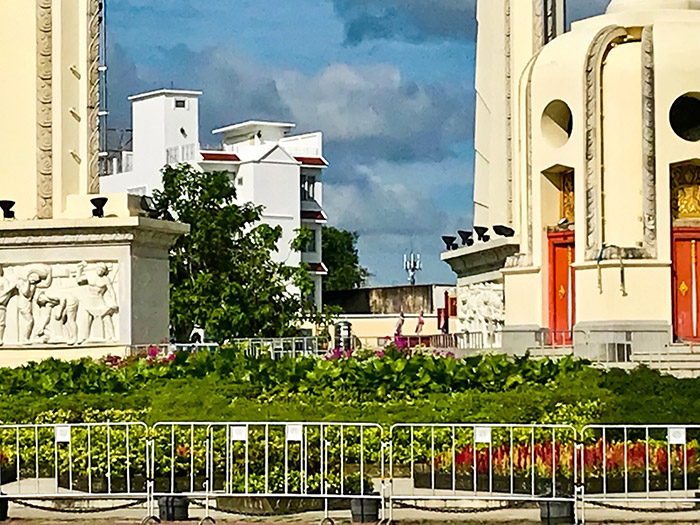 Pro-democracy activist Ekachai Hongkangwan said the site is too symbolically important to be become a potted plant garden.
Pro-democracy activist Ekachai Hongkangwan said the site is too symbolically important to be become a potted plant garden.
Thammasat University student activist Parit Chiwarak said the monument’s new landscaping shows the military government places more importance on “beautification than human rights.”
Pro-democracy activist Piyarat Chongthep also said it’s clear that the military regime doesn’t want any protesters at the symbolic site.
The monument has been a rallying point at the center of political protests in 1992 and 2010. It was the scene of brief, suppressed protest against the military coup of 2014 that installed the current regime.
Piyarat shrugged off the latest move however, saying the plants don’t make any real difference.
“They don’t need to remove them because we are not attached to the site, and even if they demolish the monument, it won’t lessen the call for democracy,” he said.
Although the junta has been in power four years, Somyot said it’s only a matter of time before it asserts its role in history again.
“The structure is large, so it can’t be dismantled or destroyed. In the end, it won’t be long before another protest takes place there,” Somyot said.
Photos: Jintamas Saksornchai, additional writing Todd Ruiz
Related stories:
No More Annual ‘Plaque Ceremony’ for 1932 Revolt
Why Was the 1932 Revolution Plaque So Important?
Revolution Plaque: Latest Casualty of 1932 Revolution’s Endangered Legacy
Officials Visit Activist Seeking to Reinstate June 24 as National Day
Police Ban Commemoration of 1932 Democratic Revolt


